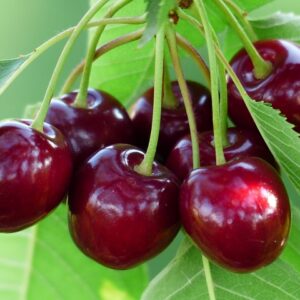The Honeycrisp apple, developed by the University of Minnesota, is a favorite variety in America. It’s renowned for its exceptional cold hardiness. Come April, the tree bursts into a display of white, fragrant blossoms, drawing in numerous pollinators. By September, you’ll be able to harvest these delicious fruits. The apples are medium in size, featuring a rosy red hue, crisp and crunchy exterior, and cream-colored interior that’s both juicy and an ideal mix of sweetness and tartness, with a hint of honey. They are excellent for snacking, adding to salads, or pairing with cheese.
For optimal growth, plant in an area that receives full sun, ideally for 8 hours daily, and in well-drained loamy or sandy soil. The Honeycrisp apple is not self-pollinating and will require cross-pollination. Some suggested pollinating partners are Gala, Fuji, McIntosh and Red Delicious. Average height 12′ – 15′ and width 8′ – 10′. Required Chill Hours: 800 – 1000. USDA Hardiness Zones 3 – 8.







Reviews
There are no reviews yet.